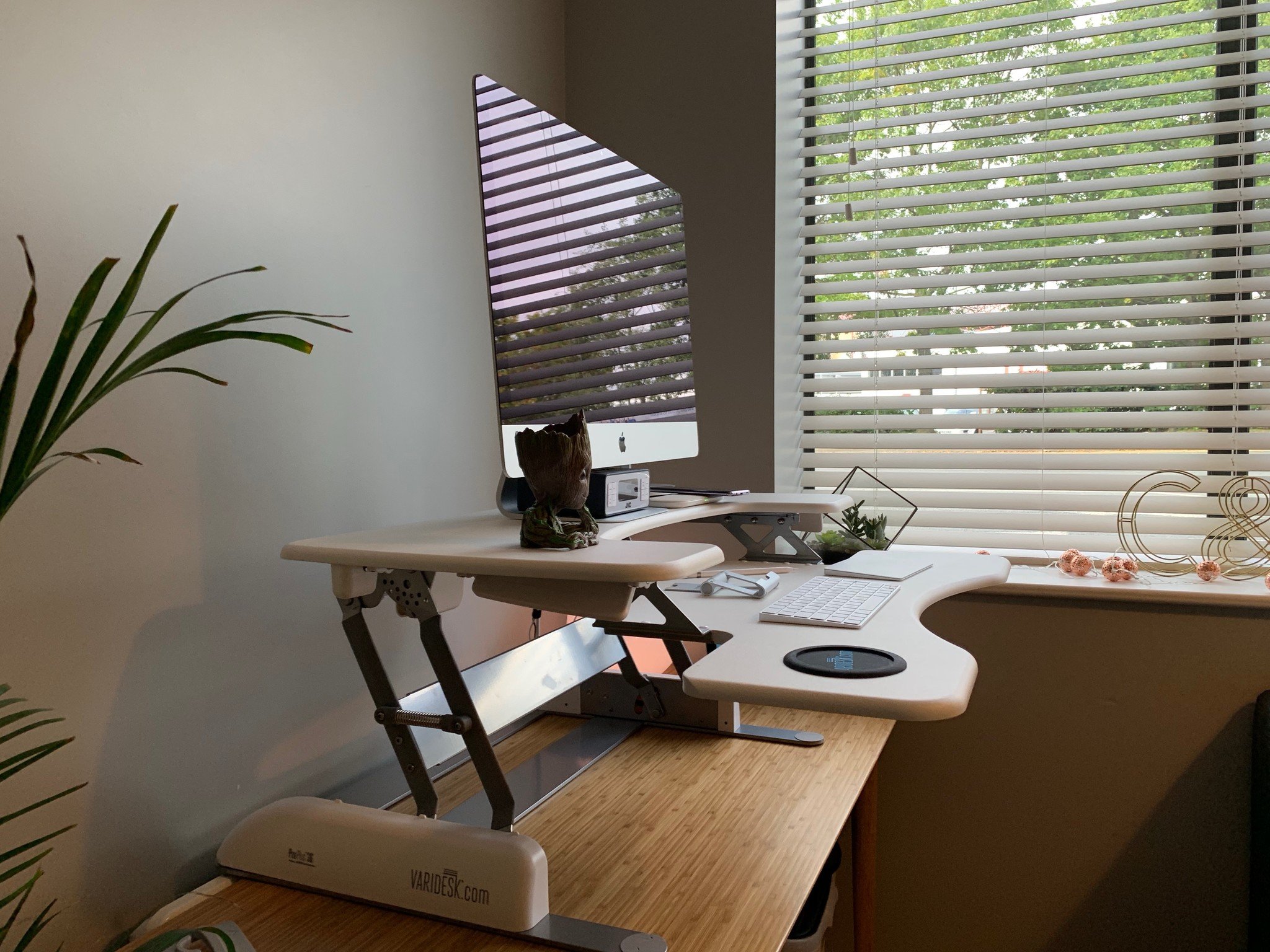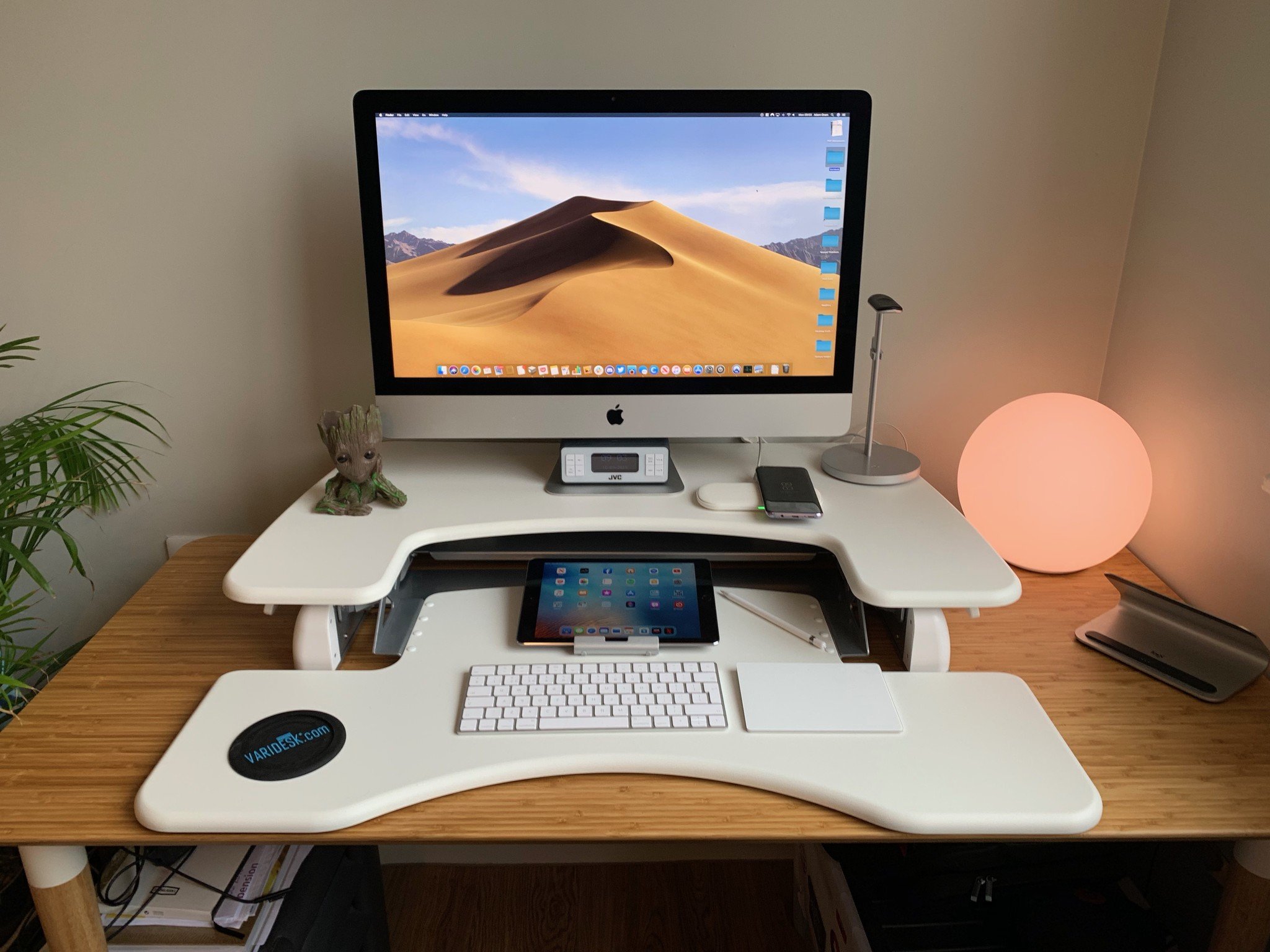
So many of us (myself 100% included) are guilty of sitting for way too long and standing way too little throughout the course of the day. If you have a job that requires you working at a desk, you probably spend a surprising amount of time in your chair rather than on your feet. It's easy to get super-focused on your work or, let's face it, just prefer being sat, and the hours of the day fly by. It's bad for your health and we should all do it less.
It's also probably one reason why sit-stand convertible desks have become more popular over recent years and, in checking out the Varidesk Pro Plus 36, I can certainly see why.
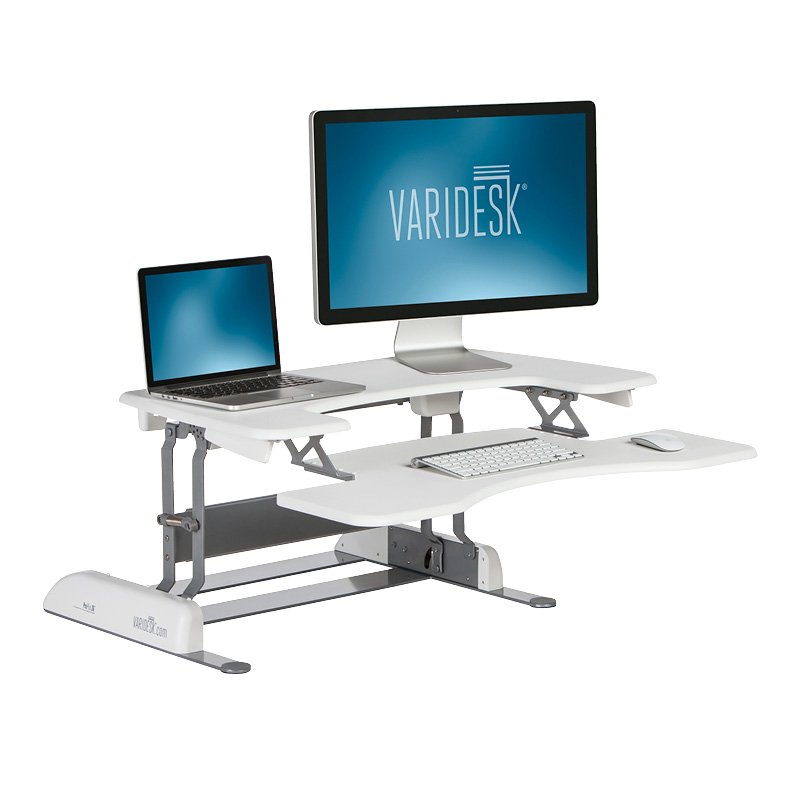
$395 at AmazonBottom line: A high-quality desk converter that's great for someone who is serious about getting into standing while working.
For
- Spacious surface area
- No assembly needed
- Support for several different heights
- Easy to switch between sitting and standing
- Near-silent operation
Against
- Bulky and heavy design
- Lifts forwards, reducing space
- Expensive
- Monitor arms sold separately
What you'll like about the Varidesk ProPlus 36
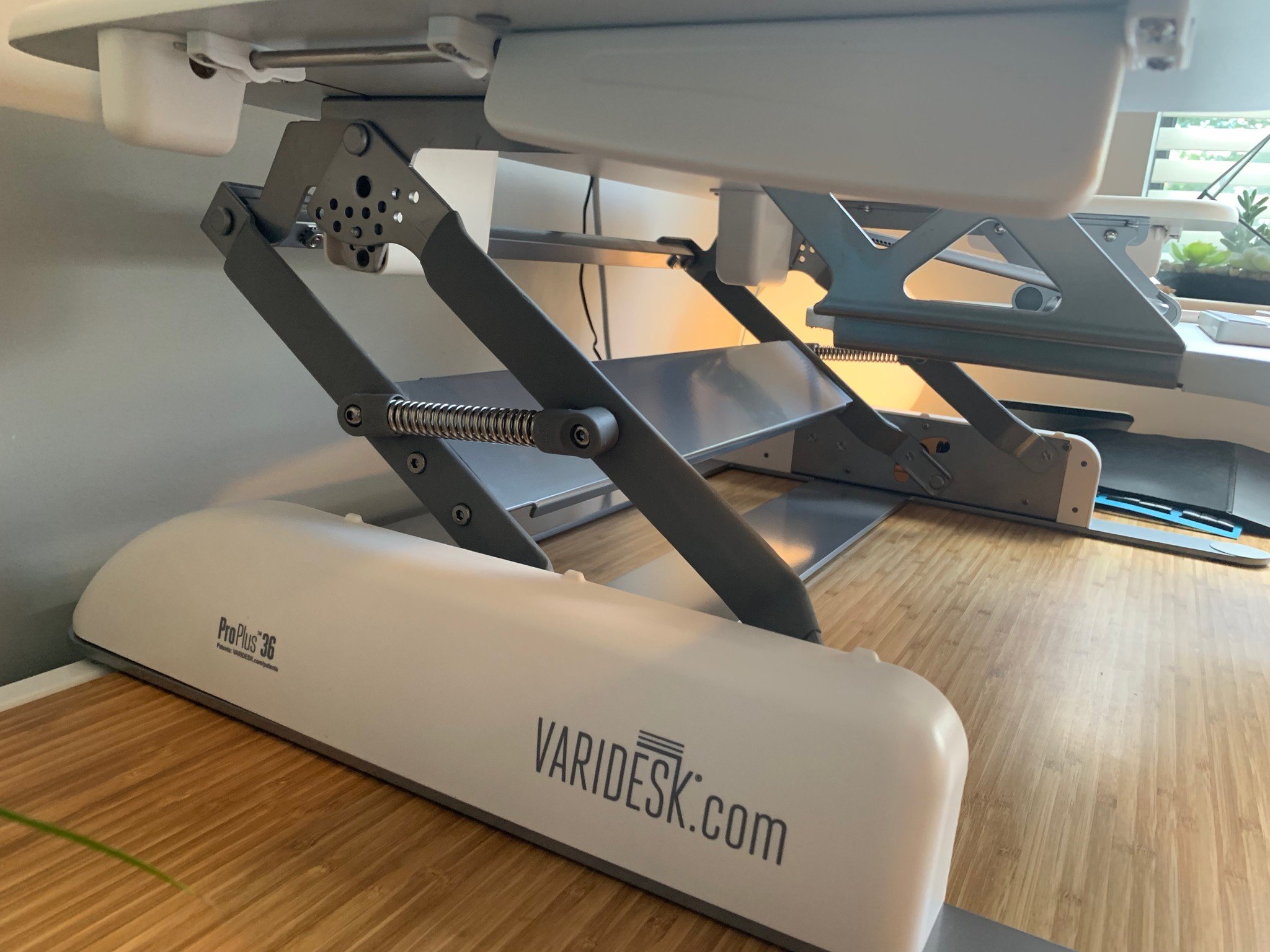
When it comes to standing desks and converters, Varidesk is probably one of the most high-profile and well-regarded names that springs to mind. The company sells a whole range of office equipment these days and the ProPlus 36 is its best seller.
The ProPlus is certainly sturdily built. The first thing you'll notice about it is its weight. That's primarily because it has a weighted base to keep it steady on your desk when raising and lowering, plus all of the weight of the mechanism and desk surfaces themselves. There's no assembly needed at all, but I would recommend enlisting a pal when getting this thing set up on your desk as lifting it and putting it in place is not a task for one person.
Once in situ, the ProPlus stays put and you can have complete confidence in your gear staying put, too. I've been using it for almost month full-time and there's hasn't been moment from first setting it up to now where I've been the least bit concerned about the safety of my computer or peripherals. That goes for while in use at sitting or standing height, or in the transition between. When at a standing height, you could tip the desk forward if you really tried, but day-to-day use won't cause any problems with support for 35lbs of weight.
You'll, of course, want to ensure your cables are sufficiently long to support being raised to a standing height and are managed in a way where they won't get caught on anything as you raise or lower the Varidesk. It comes with some reusable Velcro-style cable ties to help with that which is a nice touch.
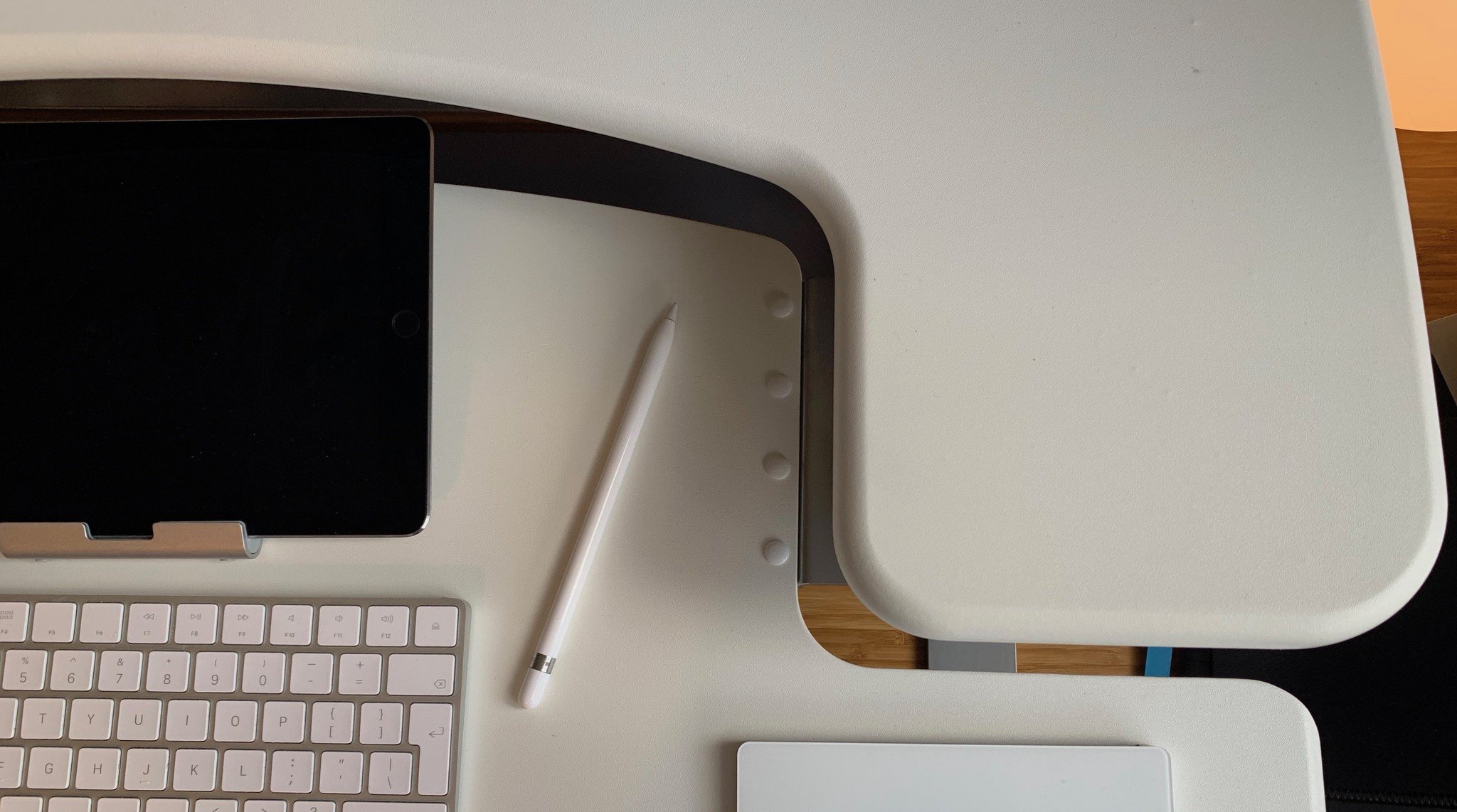
Moving the desk up and down is simple. It has a spring-loaded lift so you're not having to lug the weight of your entire computer setup every time you move it, and the mechanism is fluid in its movement. There are 11 supported height settings and the desk clicks into place when you find one. Handles on each side of the desk are used to release the latches and letting go secures it in place again. Other than a final click at the end, your movement is pretty much silent.
The ProPlus comes in a variety of sizes depending on what surface area you need. My review unit is the 36-inch model which is the middle of the pack between 30-inch and 48-inch versions. There's plenty of space on the top shelf for your main monitor or all-in-one machine. I'm using the 36 with a 27-inch iMac with no issue, though I'd say there's enough room for two monitors depending on their size and how you want to place them. The smaller version would not support more than one monitor, though, so keep that in mind. A lower shelf has plenty of space for your keyboard, mouse, and other desk essentials.
The ProPlus stays put and you can have complete confidence in your gear staying put, too
The main thing you'll like about the Varidesk is its impact on your physical and mental well-being. Not only do you burn more calories through standing than sitting, as well as helping aid your circulation, I have found that I feel better on days where I've took the time to stand for a while. It's hard to quantify, but I prefer the feeling of having stood intermittently throughout the day than when I have sat in my chair for eight hours straight. While I'd certainly recommend easing yourself into the standing desk lifestyle by standing for 30 minutes to an hour at a time at first, you soon get into it. I find changing between sitting and standing per task helps me to break up the day and ensure that I don't do one or the other for too long at a time.
What you'll dislike about the Varidesk ProPlus 36
Price-wise, the ProPlus is on the lower end of what Varidesk offers with electrically-powered options offering greater convenience at a price. That's not to say the ProPlus is cheap. Costing the best part of $400, it is certainly an investment but one that, in my experience, should pay for itself in noticeable health benefits over time. More affordable options are on the market with varying degrees of craftsmanship and reliability, but perhaps functioning as better entry points to the world of standing desks. On top of that, if you want a monitor arm you're going to have to spend $125 extra for one.
For those with smaller office spaces (or shorter cables), one potential drawback to the ProPlus line is the way in which it raises upwards but also forwards. This means you have to step back slightly when it is raised, and the higher you raise it the further away from your actual desk you are going. While you're not any further away from your monitor or keyboard as those move forward too, you're going to want to make sure you have room to actually step back.
So should you buy the Varidesk ProPlus 36?
It's easy to see why the ProPlus 36 is the best-selling Varidesk model. Despite its heft, it's a breeze to use once set up and its ability to transition between sitting and standing positions in seconds helps you to sit less and stand more.
The ProPlus 36 is well-built and reliable, though that comes with a cost that may be off-putting to some. As far as standing desk converters go, it still represents an excellent value for money.
Adam Oram is a Senior Writer at iMore. He studied Media at Newcastle University and has been writing about technology since 2013. He previously worked as an Apple Genius and as a Deals Editor at Thrifter. His spare time is spent watching football (both kinds), playing Pokémon games, and eating vegan food. Follow him on Twitter at @adamoram.
